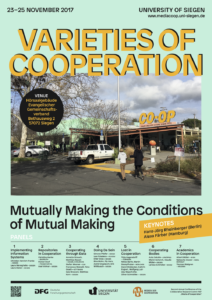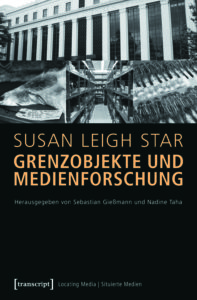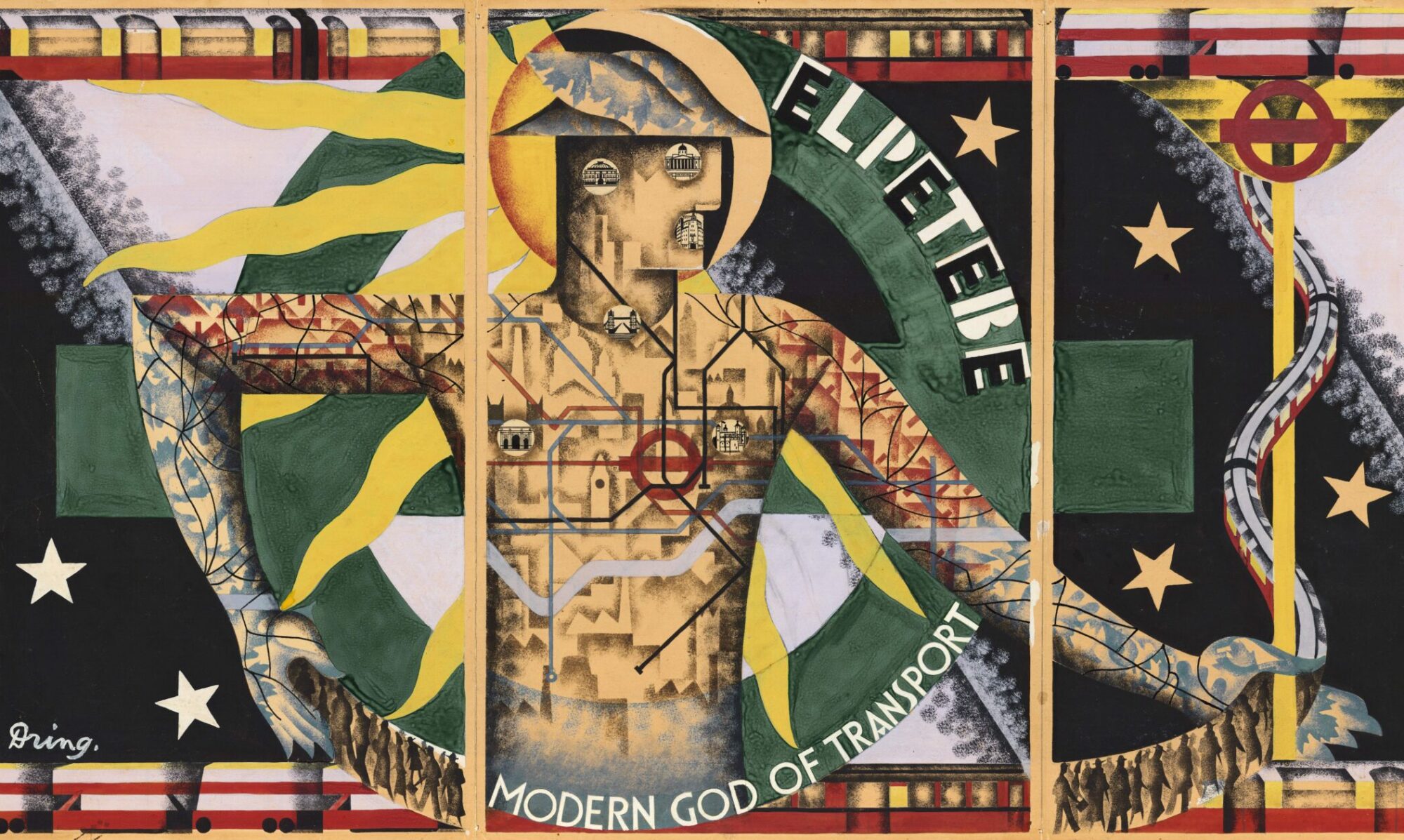 It is my great pleasure to welcome you to “Repositories in Cooperation”. Our panel for “Varieties of Cooperation” developed out of preparatory work for the Collaborative Research Center „Media of Cooperation“, in which we have attempted to refocus and reappropriate Susan Leigh Star’s and James Griesemer’s original notion of the boundary object. Within our 2015 workshop on “The Translation of Boundary Objects” we have started to re-engage with a more specific understanding that returns to Star’s list of four type of boundary objects: repositories, ideal types, coincident boundaries and forms/labels. The results of this have now been published in German as “Grenzobjekte und Medienforschung”, along with a translation of ten seminal texts by Star and her collaborators. As Erhard Schüttpelz has shown in his commentary on “This is Not a Boundary Object” all four types deal with the relation between modularity and extendability, with the relation between “parts” and “wholes”. [1]
It is my great pleasure to welcome you to “Repositories in Cooperation”. Our panel for “Varieties of Cooperation” developed out of preparatory work for the Collaborative Research Center „Media of Cooperation“, in which we have attempted to refocus and reappropriate Susan Leigh Star’s and James Griesemer’s original notion of the boundary object. Within our 2015 workshop on “The Translation of Boundary Objects” we have started to re-engage with a more specific understanding that returns to Star’s list of four type of boundary objects: repositories, ideal types, coincident boundaries and forms/labels. The results of this have now been published in German as “Grenzobjekte und Medienforschung”, along with a translation of ten seminal texts by Star and her collaborators. As Erhard Schüttpelz has shown in his commentary on “This is Not a Boundary Object” all four types deal with the relation between modularity and extendability, with the relation between “parts” and “wholes”. [1]
Grenzobjekte und Medienforschung
 Susan Leigh Stars (1954–2010) Werk bewegt sich zwischen Infrastrukturforschung, Sozialtheorie, Wissenschaftsgeschichte, Ökologie und Feminismus. Die wegweisenden historischen und ethnografischen Texte der US-amerikanischen Technik- und Wissenschaftssoziologin liegen mit diesem Band erstmals gesammelt auf Deutsch vor. Ihre Arbeiten zu Grenzobjekten, Marginalität, Arbeit, Infrastrukturen und Praxisgemeinschaften werden interdisziplinär kommentiert und auf ihre medienwissenschaftliche Produktivität hin befragt.
Susan Leigh Stars (1954–2010) Werk bewegt sich zwischen Infrastrukturforschung, Sozialtheorie, Wissenschaftsgeschichte, Ökologie und Feminismus. Die wegweisenden historischen und ethnografischen Texte der US-amerikanischen Technik- und Wissenschaftssoziologin liegen mit diesem Band erstmals gesammelt auf Deutsch vor. Ihre Arbeiten zu Grenzobjekten, Marginalität, Arbeit, Infrastrukturen und Praxisgemeinschaften werden interdisziplinär kommentiert und auf ihre medienwissenschaftliche Produktivität hin befragt.
Mit Kommentaren von Geoffrey C. Bowker, Cora Bender, Ulrike Bergermann, Monika Dommann, Christine Hanke, Bernhard Nett, Jörg Potthast, Gabriele Schabacher, Cornelius Schubert, Erhard Schüttpelz und Jörg Strübing.
„Grenzobjekte und Medienforschung“ ist im Open Access verfügbar.
Der Durkheim-Test. Anmerkungen zu Susan Leigh Stars Grenzobjekten
In den von Cornelius Borck herausgegebenen „Berichten zur Wissenschaftsgeschichte“ ist dieser Tage ein Text über Susan Leigh Star erschienen, an dem ich lange gearbeitet habe. Und natürlich ist er eigentlich immer noch nicht fertig – aber nun immerhin online auffindbar, insofern freundliche Bibliotheken die Zeitschrift abonniert haben. Hier der Abstract:
The Durkheim Test. Remarks on Susan Leigh Star’s Boundary Objects. The article reconstructs Susan Leigh Star’s conceptual work on the notion of ‘boundary objects’. It traces the emergence of the concept, beginning with her PhD thesis and its publication as Regions of the Mind in 1989. ‘Boundary objects’ attempt to represent the distributed, multifold nature of scientific work and its mediations between different ‘social worlds’. Being addressed to several ‘communities of practice’, the term responded to questions from Distributed Artificial Intelligence in Computer Science, Workplace Studies and Computer Supported Cooperative Work (CSCW), and microhistorical approaches inside the growing Science and Technology Studies. Yet the interdisciplinary character and interpretive flexibility of Star’s invention has rarely been noticed as a conceptual tool for media theory. I therefore propose to reconsider Star’s ‘Durkheim test’ for sociotechnical media practices.
